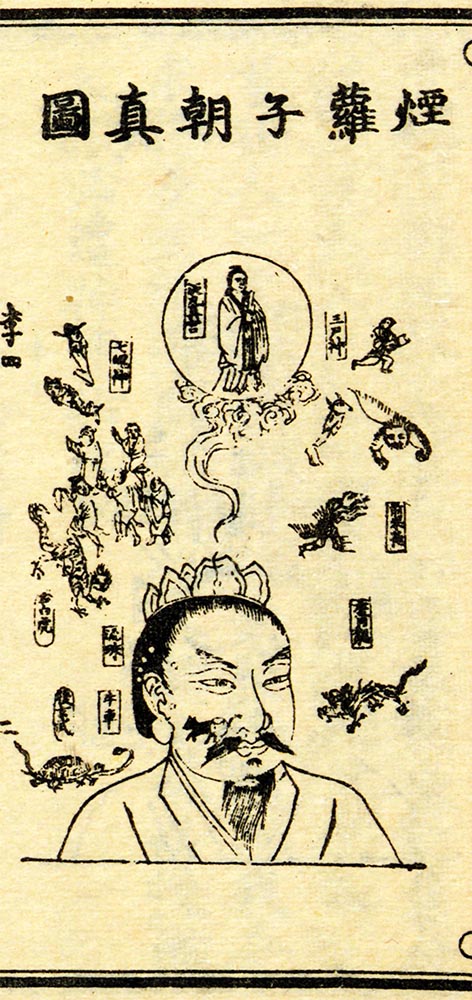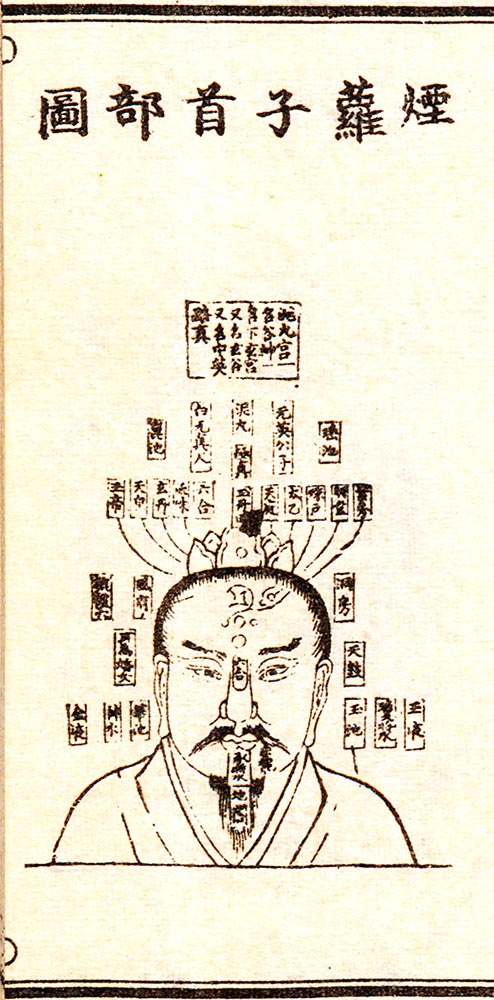Master Yan Luo’s head maps • frontal view and southwards looking
Songs of the Bodily Husk (Ti ke ge 體殼歌), in Daoist Canon (Zhengtong daozang 正統道藏), fasc. 125, no. 263, juan 18: 2a, 2b. Public domain; color scan.
A | 25 金液 golden juice
A | 26 神水 spirit waters
A | 27 華池 blossom pond
A | 28 玉池 jade pond
A | 29 瓊漿 qióng-jade bouillon
A | 30 玉液 jade juice
A | 31 承漿 bouillon (saliva) catcher
Labels denoting the mouth and oral cavitiy relate to salivary techniques. Saliva is used in various Daoist self-nourishing exercises. Metaphors for liquid nourishments (‘pond’, ‘juice’, ‘bouillon’) highlight the saliva’s and bodily fluids’ importance.
–
The two topographical body maps of the head (A, B) depict a gendered, male living body; they show head and shoulders of a mustachioed and bearded man with long earlobes, wearing a vajrasattva crown and clothes.
In the profile view from the right (B) the feeling of oneself in space or proprioceptual orientation is indicated by means of the four animals of the cardinal directions (B | 4, 5, 7, 8). The adept thus looks south like the ruler on the throne. Since old, to rule a state is likened to ordering one’s bodily self (zhi shen 治身).
Arranged around the head—the ‘perfect palace of the mud ball’ (the brain, B | 1, A | 1), and the spirits of the ‘seven hún (soul aspects)’ (B | 2), and of the ‘three corpses’ (B | 3) convey by their arrangment a sense of orientation in the personal and peripersonal space just as it emerges in the ego’s bodily awareness, or feeling of oneself (selbstgefühl ).


